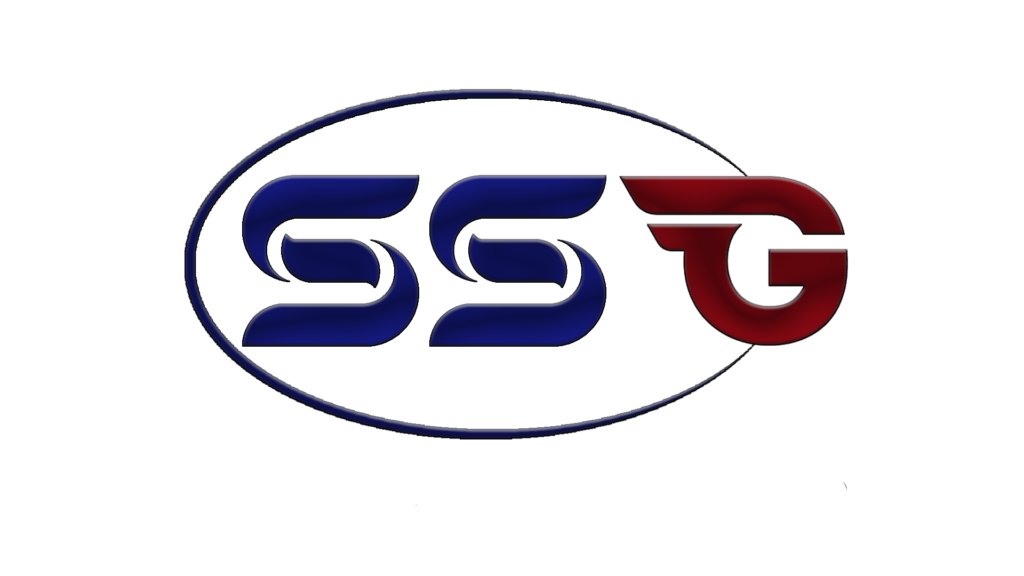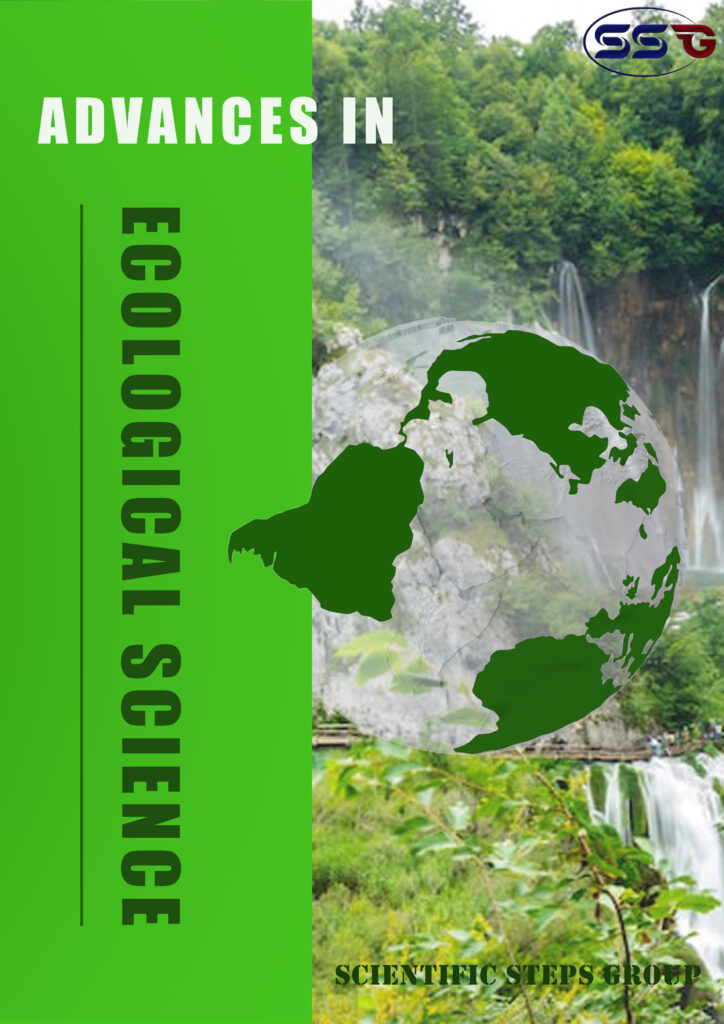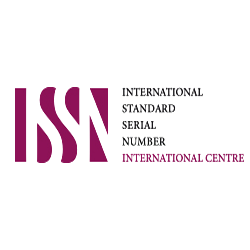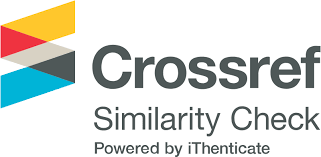ADVANES IN ECOLOGICAL SCIENCE (AECS) is an open access and online journal dedicated to sharing outcomes of basic ecological research, and implications or applications based on ecological research. The journal mainly focuses on basic ecological research on terrestrial and aquatic populations, communities, ecosystems and landscapes. Also, its scope includes applied issues such as biodiversity loss and climate change based on ecological research. We aim to bring important work using any ecological approach (including molecular techniques) to a wide international audience and therefore only publish papers with strong and ecological messages that advance our understanding of ecological principles. The research presented must transcend the limits of case studies. Both experimental and theoretical studies are accepted, as are descriptive or historical accounts, although these must offer insights into issues of general interest to ecologists.
Topics commonly include:
Biogeochemistry
Ecological effectiveness
Landscape Ecology
Terrestrial Ecosystem
Environmental Engineering
Resources Valuation
Industrial Ecology
Molecular Ecology
Population Ecology
Ecosystem Services
Aquatic Ecosystem
Community Ecology
Marine Ecology
Plant Ecology
Microbial Ecology
Human Ecology
Ecological Design
Ecological Impact of Climate Change
1- The ADVANCES IN ECOLOGICAL SCIENCE (AECS) is an internationally recognized publication in the field of civil engineering and infrastructure. This scientific journal features peer-reviewed, open access articles and is published quarterly by SCIENTIFIC STEPS INTERNATIONAL PUBLISHING SERVICES L.L.C.
2- Determine the type of article you wish to submit:
- Research Article/Original Research: A complete description of original research findings.
- Letters/Short Reports/Communications: Brief descriptions of research findings.
- Review Article: A comprehensive summary of a topic that identifies and summarizes the results of original articles on the topic. Review articles may include, but are not limited to, scoping reviews, systematic reviews, critical reviews, literature reviews, and meta-analyses.
- Case Report: A descriptive, exploratory or explanatory analysis of a person, group, or event.
- Viewpoint/Opinion: An essay presenting an opinion on a specific topic, which may sometimes be controversial.
3- Ensure the originality of your manuscript by checking it for plagiarism using a plagiarism checker. The maximum similarity rate allowed in the ADVANCES IN ECOLOGICAL SCIENCE (AECS) is 20%. Additional information regarding publishing ethics, including plagiarism, can be found in the Publication Ethics.
4- Prepare your manuscript using the Microsoft Word Template
5- Submit your manuscript online through the Submission Website. The submitting author, who is typically the corresponding author, is responsible for the manuscript during the submission and peer-review process. The submitting author must confirm that all eligible co-authors have been included in the author list and have approved the submitted version of the manuscript. All co-authors can view the manuscript details in the submission system by registering and logging in using the email address provided during manuscript submission.
6- Manuscript presentation:
6.1- Formatting a Manuscript for Submission
a. Writing Style: Manuscripts must be written in clear, concise English and should be typed using a Times New Roman font, size 12 pt. Please use 1.5 line spacing for all materials. The total length of the paper, including text, tables, and figures, should not exceed 25 pages. Tables and figures should be placed within the text.
b. Formatting: Manuscripts should include line numbers and page numbers but should not include headers, footers, notes, or footnotes. The final manuscript file size should not exceed 5 MB.
c. Scientific Ethics: The manuscript should follow ethical standards in scientific writing, including:
- Ensuring that all individuals who made significant contributions to the research are included as authors and those without significant contributions are excluded.
- Avoiding plagiarism by properly referencing sources and rephrasing as necessary.
- Taking caution regarding the novelty and copyrights of others.
6.2- Manuscript Structure
a. Title Page
The title page should include the following elements:
- Title: The title should be informative, meaningful, specific, and concise. It should avoid unnecessary jargon, abbreviations, and detail.
- Author Names: The full names of all authors should be provided.
- Author Affiliations: Institutional full addresses for all authors should be included.
- Corresponding Author: The name and email address of the corresponding author should be specified and marked with an asterisk (*). The corresponding author is responsible for any disputes arising from publication.
- Abstract: The abstract should be limited to 250 words and should provide an overview of the research objectives, methodology, results, and conclusions.
- Keywords: Five selective and appropriate keywords should be included for indexing purposes. Avoid uncommon abbreviations and general terms.
- Note: No other subheadings should be included in this page.
b. Main Text
Original Investigations and Brief Reports typically comprise five sections: Introduction, Materials, Methods, Results, and Discussion.
- Introduction: The introduction section of a research work provides the necessary context by presenting comprehensive background information, explaining the motivation and objectives of the study. It should clearly outline what was done and achieved, especially in the final paragraph, which should explicitly state the research objective. This section should avoid detailed descriptions of methods, results, or conclusions, and should not include information on data collection and analysis methods or an extensive review of the field. Additionally, it should steer clear of disproportionate citations of the author’s own work, the work of colleagues, or work that supports their findings while ignoring contradictory studies or work by competitors.
- Materials and Methods/Methodology: This section should provide comprehensive details to enable competent workers to replicate the experiment, specifying exact technical specifications, quantities, and sources or methods of preparation. It should describe the chronological order of the study, offering a brief yet informative account. The section must clearly explain the study process and structure, including materials used, experimental design, data recording protocols, and data analysis methods. Subheadings should be included for each category, method, procedure, study area, or analysis. Most of the section should be written in the past tense using passive voice, and results should not be included.
- Results and Discussion: This section presents the experimental data, offering the most significant insights of the paper. Results are organized in tables and figures, with each group introduced in a separate paragraph highlighting overall trends and notable data points. Key statistics, such as the number of samples (n), the index of dispersion (SEM, SD), and the index of central tendency (mean, median, or mode), are included, along with any statistical analyses and specific data like p-values. The section is concise, clearly presented, and devoid of discussion, using tables for exact values and figures for trends or relationships. Each table and figure is self-explanatory and referred to within the text without redundancy.
The discussion begins with an overview of the work and a summary of the key findings. It uses the results to describe each studied effect, construct arguments for or against hypotheses, or address the main objectives of the study. The discussion delves into the principles, relationships, and generalizations demonstrated by the results, pointing out exceptions, lack of correction, and defining unsettled points. The author’s interpretations are presented, emphasizing the broader implications and significance of the findings.
- Conclusion: The conclusion section should begin with a summary paragraph that encapsulates the work done in the article. This summary should provide an overview of the research, methodologies employed, and key findings. Following the summary, the conclusion should contain the main points of the article, discussing important results, applications, and developments arising from the research. This section should demonstrate whether the research objectives have been achieved.
The conclusion should not merely repeat information from the Results and Discussion sections but should offer insightful commentary on the significance and implications of the findings. The final paragraph of the conclusion should provide recommendations for future research, suggesting areas where further investigation is needed or proposing new lines of inquiry based on the study’s outcomes.
Conclusions should be written in descriptive paragraph form. Avoid using bulleted lists.
This section gives appreciation to individuals and organizations that provide assistance to the author. Acknowledgments to sponsors and financial support are also included in this section.
- References: All references cited in the text should be included in the References section and must be carefully selected to encompass relevant and key sources within the field, as well as previous studies that provide context or support for the present work. At least 80% of the references should be from the past 10 years to ensure the inclusion of recent and up-to-date research. References should not be included merely to cite specific authors or journals unless directly relevant to the study. Citations of previous publications from the author’s laboratory are appropriate if pertinent. The references must be formatted according to the APA (7th edition) style.
For full articles, authors are required to include a minimum of 30 references, while review articles must have at least 60 references. Self-citations should not exceed 10% of the total references. There are no specific reference limits for other types of submissions, such as case studies, letters, and opinion pieces.
Examples of different reference types include:
Journal Articles
- Afrianto (2018) “Being a Professional Teacher in the Era of Industrial Revolution 4.0: Opportunities, Challenges and Strategies for Innovative Classroom Practices,” English Language Teaching and Research, 2(1), 1-13.
- Albantani, A. M., & Madkur, A. (2017) “Musyahadat Al Fidyu: Youtube-Based Teaching and Learning of Arabic as Foreign Language (AFL),” Dinamika Ilmu, 17(2), 291-308.
Books
- McKibbin, B. (2007) Deep Economy: The Wealth of Communities and The Durable Future, New York: Times Book/Henry Hold and Co.
- Panitch, L., & Gindin, S. (2012) The Making of Global Capitalism: The Political Economy of American Empire, London: Verso.
Book Chapters
- Pigg, K. E., & Bradshaw, T. K. (2003) “Catalytic Community Development: A Theory of Practice for Changing Rural Society,” In Challenges for Rural America in The Twenty-First Century, edited by D. L. Brown & L. E. Swanson, Pennsylvania State University Press.
Regulations and Laws
- Law Number 23 of 2011 concerning Zakat Management (2011, November 25), State Gazette of the Republic of Indonesia Year 2011 Number 115, Jakarta.
- Law Number 5 of 1984 concerning Industry (1984, June 29), State Gazette of the Republic of Indonesia Year 1984 Number 22, Jakarta.
Theses
- Choiri, A. (2021) Pemberdayaan Pemulung Melalui Pengelolaan Sampah Plastik di Medayu Utara Rungkut Surabaya [Thesis], UIN Sunan Ampel Surabaya, Surabaya.
- Erizal, Y. (2011) Analisa Pelaksanaan Kemitraan Anak Angkat Bapak Angkat (ABA) dalam Usaha Agribisnis Kelapa Sawit di PT. GMP Kec. Pasaman Kabupaten Pasaman Barat [Thesis], University if Andalas, Padang.
Internet Sources
- Jenkins, R. (2018, January 7) “Generation Z vs. Millennials: The 8 Differences You Need to Know,” HR Daily Advisor. Retrieved from https://hrdailyadvisor.blr.com/2017/09/25/generation-z-vs-millennials-8-differences-need-know/.
- Maritime Security Agency of the Republic of Indonesia. (2021, June 25) “Amerika Serikat dan Indonesia Bangun Pusat Pelatihan Maritim,” Maritime Security Agency of the Republic of Indonesia. Retrieved from https://bakamla.go.id/publication/detail_news/amerika-serikat-dan-indonesia-bangun-pusat-pelatihan-maritim.
7- Final checklist before submission
Before submitting the manuscript for publication, authors must meticulously ensure the following details are addressed:
- The title page must accurately include the full title of the paper, the names, designations, and institutional affiliations of all authors, as well as the abstract and keywords.
- The manuscript file should be prepared according to the provided instructions and must exclude the title page and any author details.
- The COPYRIGHT TRANSFER AGREEMENT (CTA) must be completed and signed by all authors.
- The Author Contribution Form (ACF) must be completed and signed by all authors.
All articles published in ADVANCES IN ECOLOGICAL SCIENCE (AECS) are published in full open access. An article processing charge (APC) of 320 USD applies to papers accepted after peer review.
This article processing charge is to cover the costs of peer review, copyediting, typesetting, long-term archiving, and journal management.
Local VAT or Sales Tax will be added if applicable.
Submitted papers should be well formatted and use good English. Authors may use SSG’s English editing service prior to publication or during author revisions.
You can read more about Article Processing Charges (APC) of SSG’s Journals.
Publication Ethics Statement
- The ADVANCES IN ECOLOGICAL SCIENCE (AECS) journal, published by SCIENTIFIC STEPS INTERNATIONAL PUBLISHING SERVICES L.L.C, upholds high ethical standards in scholarly publication, aligning with the Committee on Publication Ethics (COPE) guidelines. Rigorous peer-review processes and stringent ethical policies are enforced to maintain the integrity and excellence of scientific contributions.
- Disclosure of Conflicts of Interest: Authors are required to disclose any potential conflicts of interest that could influence their work.
- Accurate Presentation of Findings: Authors must present their research truthfully and objectively discuss the significance of their findings.
- Transparency in Research Methodology and Data: Detailed descriptions of research methods and data are necessary for replication. Authors are encouraged to deposit raw data publicly before manuscript submission.
- Exclusivity of Submissions: Manuscripts submitted to AESC should not be under consideration by other journals simultaneously.
- Translation Standards and Proper Citations: Translations of content must adhere to journal policies, and proper citations of original sources are necessary.
- Prompt Error Reporting: Authors are responsible for promptly informing AESC of any errors discovered in their published papers.
- Originality and Permissions: Manuscripts should contain original content, and permissions are needed for previously published figures or images.
- Prohibition of Plagiarism and Misconduct: Instances of plagiarism, data falsification, improper authorship attribution, and related ethical concerns are taken extremely seriously by AESC journal. Editors are trained to handle such issues with a zero-tolerance policy, ensuring the highest level of publishing ethics.
- To guarantee the authenticity and originality of submitted content, AESC journal employs iThenticate, a tool used to verify submissions against existing publications, preventing instances of duplicate or unethical content from being published. This commitment to maintaining publication ethics is integral to ensuring the integrity of scholarly works within the journal.
- Image Integrity and Misrepresentation: Manipulation of images that could mislead interpretation is strictly prohibited.
- Thorough Misconduct Investigations: Allegations of publication misconduct are thoroughly investigated, and appropriate action is taken if misconduct is confirmed.
- AESC commits to upholding these ethical guidelines to maintain the integrity of scholarly work and ensure transparency in the publication process. These standards are enforced through a rigorous editorial process, including checks for plagiarism and image manipulation. The journal takes any allegations of misconduct seriously, conducting thorough investigations and taking necessary actions to maintain publication integrity.
Copyright / Open Access
The AESC journal, under SSG’s publication, follows an Open-Access model for articles published within it. These articles are disseminated in accordance with the Creative Commons Attribution License (CC BY). Authors retain the copyright for their published work.
Upon publication, AESC will include the following statement at the conclusion of the article:
“Copyright: © year of publication by the authors. Licensee SSG, Dubai, UAE.
This article is an open access article distributed under the terms and conditions of the Creative Commons Attribution (CC BY-NC-ND 4.0) license (http://creativecommons.org/licenses/by-nc-nd/4.0/).“
This note signifies that the published article is open access and governed by the CC BY license, allowing readers to access, distribute, and build upon the content while acknowledging the original authors.
Research Ethics
Research Involving Human Subjects:
- Declaration of Helsinki: Access the Declaration of Helsinki for guidelines on ethical research involving human subjects.
- Ethics Committee Approval: Obtaining approval from a local institutional review board (IRB) or an appropriate ethics committee is essential, with specific details required in the ‘Institutional Review Board Statement’.
- Informed Consent: Participants must provide written informed consent for inclusion and publication.
- Non-interventional Studies: Full disclosure to participants regarding anonymity, research purpose, data use, and associated risks is required.
- Ethical Approval Exemption: If not required, authors should provide exemption details or cite relevant legislation.
- Protection of Patient Information: Anonymization of patient details is necessary, and authors need signed informed consent for publication of case details, personal information, or images.
- Vulnerable Groups and Categorization: Additional scrutiny may occur for studies involving vulnerable groups, and justification for categorization by race, ethnicity, gender, etc., should be explained.
Ethical Guidelines for Animal Research:
Research Involving Cell Lines:
- Cell Line Origin and Approval: Find guidance on cell line origin and approvals from institutional review boards or ethics committees through specific journals, institutions, or published papers in the field of cell biology.
Research Involving Plants:
- Compliance with Guidelines: Explore information related to plant research guidelines from institutions, national bodies, or international conventions such as the Convention on Biological Diversity and the Convention on the Trade in Endangered Species of Wild Fauna and Flora.
Clinical Trials Registration:
Dual Use Research of Concern:
- Indication and Explanation: Seek information on dual-use research concerns from sources related to biosecurity, national security, and relevant international laws or guidelines.
Sex and Gender in Research:
- SAGER Guidelines: Refer to the ‘Sex and Gender Equity in Research (SAGER) guidelines‘ for guidance on incorporating sex and gender considerations in research.
Borders and Territories:
- Editorial Neutrality: Editorial policies of journals often reflect a neutral stance on disputes over borders and territories. These principles guide content decisions and dispute resolution processes within the journal’s framework.
Citation Policy
Authors are required to adhere to strict guidelines regarding citation practices to ensure academic integrity and proper attribution of sources.
- Clear and Appropriate Citation: All sources used, including the author’s own previously published work, must be cited clearly and accurately. Obtaining appropriate permissions, when necessary, is imperative.
- Avoidance of Excessive Self-Citation: Authors should refrain from excessive self-citation, maintaining a balanced and unbiased citation practice.
- Read-before-Citing Policy: Authors are expected to have read and comprehended the content of the references they cite. Copying references without reviewing the content is unacceptable.
- Impartial Citation Practices: Authors should not show bias by preferentially citing their own, friends’, peers’, or institution’s publications.
- Avoidance of Advertisement Citations: Citations of advertisements or advertorial material are not permitted in scholarly works.
In line with the Committee on Publication Ethics (COPE) guidelines, direct quotations from other researchers’ work, including the author’s own, should be appropriately marked within quotation marks and cited. COPE has issued a discussion document on citation manipulation, offering recommendations for best practices.
AESC expects authors to strictly adhere to these citation policies to maintain the scholarly integrity of published work. These guidelines aim to promote fairness, transparency, and ethical citation practices within academic research and publishing.





